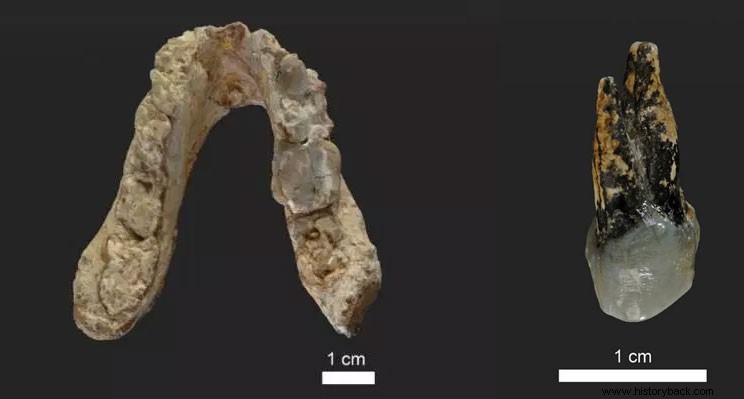According to a new study, the last common ancestor between humans and chimpanzees - improperly known as the "missing link" - may have lived in the Eastern Mediterranean , and not in Africa as previously thought.
The controversial theory comes from a fossil study of two individuals of Graecopithecus freybergi , hitherto classified as apes and now classified as the oldest hominins ever found, and thus potentially ancestors of Homo sapiens as well.
12 or more million years ago, Europe was populated by apes.
But about 10 million years ago, environmental conditions deteriorated and monkeys began to disappear from Europe, remaining mainly confined to Africa.
According to the commonly accepted theory, they then split into gorillas, chimpanzees and humans.
However, two very recent monkey fossils have been found in Europe:in 2012 a 7.24 million year old tooth in Azmaka (Bulgaria), and in 1944 a 1.175 million year old jaw in Pyrgos Vassilissis (Greece) ).
Until now it was thought that the so-called Graecopithecus was "only" the most recent European ape, but a new study has come to very different conclusions.
Conducted by Nikolai Spassov (from the National Museum of Natural History in Sofia, as well as the discoverer of the Bulgarian tooth), Madelaine Böhme (University of Tübingen) and David Begun (University of Toronto), research states that Graecopithecus belongs to the hominin tribe .
Of the Graecopithecus only those two fossils remain.
Furthermore, the Greek mandible, nicknamed El Graeco , has a very worn surface.
The scientists then used a computerized micro tomography scanner to analyze the mandible, finding that the roots of one of the premolars are "fused" in an unusual way. “At the moment this condition is known only in hominins - pre-humans and humans ”, says Spassov . "It is extremely rare in recent chimps."
Another hominine trait is that the Graecopithecus had relatively small canines.
Together, the researchers say, the two characteristics suggest that Graecopithecus it may have been a hominine.

In a complementary analysis, the team also studied the geology of Greece and Bulgaria at the time, establishing that the Graecopithecus it lived exactly in the environment that would have prompted the evolution of the first hominins:a sort of savannah in which the monkeys had to find new sources of food and evolve bipedalism.
Furthermore, the geological dating of 7.18 - 7.24 million years ago means that Graecopithecus slightly precedes the oldest potential hominine found in Africa (Chad):the Sahelanthropus tchadensis, dated between 7 and 6 million years ago. "This dating allows us to shift the divide between humans and chimpanzees in the Mediterranean area," said paleoanthropologist David Begun.
Professor Böhme she added:"Our results can finally change our ideas about the origin of humanity. Personally I don't think Graecopithecus descendants went extinct, they may have spread to Africa later. Our data support the theory that the split division between chimpanzees and humans was taking place in the eastern Mediterranean, not in Africa. If accepted, it would change the beginning of human history ».
